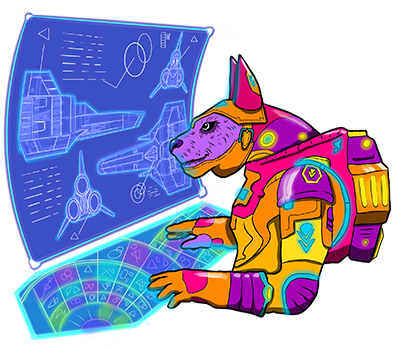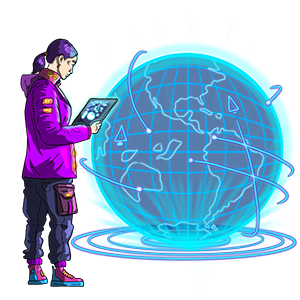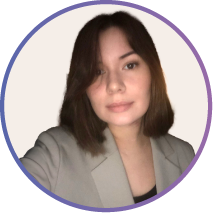In an ever-evolving industry like localization, the successful integration of technology is key to improving workflows and maintaining efficiency. Innovation isn’t just about adopting the latest tools—it’s about designing thoughtful solutions that empower teams to work smarter, not harder. Sofia Eliseeva, the Coordinator of the Russian LQA team, offers a unique perspective on this. With nearly a decade of experience in localization, she’s seen firsthand how the right blend of technology and teamwork can make all the difference. In this interview, Sofia shares her insights into technology integration, the importance of collaboration, and the role AI will play in shaping the future of the localization industry.
What are the main challenges you’ve faced in integrating new technology into our workflow?
The most challenging, yet crucial aspect of the process is coordination—and that comes from a coordinator! When implementing something for the entire team, it’s not just about doing what you want, how you want. Gathering feedback and making necessary adjustments to the tool you’re working on is essential. This process can sometimes lead to disagreements, which can be frustrating. You may want to do things a certain way and easily feel like you’re entitled to, since you are the one who came up with the idea or developing an enhancement. But it’s important to step back and listen to everyone who will be impacted by your creation.

Can you describe a recent technology implementation project you were involved in and your role in it?
I recently worked on integrating Trello with Google Sheets. The idea was to create a simple button that transfers task details to assigned cells. As a linguist, my role was primarily conceptual, and I relied heavily on the technical support of a developer. This little side project of mine was a great success, helping me and my fellow coordinators save time and reduce stress when maintaining our task tracking sheet. The tool also helped eliminate human error in task entries, leading to greater accuracy and consistency across the board. The positive feedback from the team highlighted how much this small innovation improved our daily workflow.
What do you prioritize when designing a new tech-related solution?
I prioritize both ease of creation and ease of use. Since I’m not a developer, I need to focus on simplicity and efficiency. I often start by researching the best approaches, and thankfully, nowadays, we can leverage generative AI to identify low-effort methods that bring our ideas to life without excessive effort.
Once the solution is created, ensuring it’s user-friendly is crucial. I begin by making sure I’m comfortable with the tool myself, then I ask colleagues to test it out and provide feedback on its convenience. This approach ensures that the final product is both easy to build and easy to use, meeting the needs of the entire team.
What would you suggest taking into consideration during the testing phase for new technology or Al solutions before full implementation?
During the testing phase you might start noticing room for further improvement, which is great! I would say it is very important to keep a backlog with all the ideas you might come up with during this phase. But it’s just as important not to get too caught up in making everything perfect right away. Focus on getting the main idea working well and release the tool when it’s ready. You can always go back and make updates later. This way, you stay on track and can gather real feedback from others as they start using it.
Can you share an example of how you tested a new tool’s performance in a real-world environment before full implementation?
When working on my project, I conducted thorough testing on a copy of our task tracking sheet before making any changes to the main version. It was crucial to ensure everything was smooth and functional, so I ran multiple tests and made revisions whenever I spotted any issues. Testing is absolutely essential. It ensured that the final version was reliable and ready for the rest of the team to use.

In your experience, what are the key factors that contribute to a smooth transition and long-term success when integrating new technology?
Providing clear and easy-to-understand training on the new tool is crucial for the long-term success of any initiative. I always like to create a simple guide document with step-by-step instructions and pictures so that anyone can refer to it whenever needed. This approach ensures that team members can easily find the information they need with minimal hassle.
Also, as I mentioned earlier, I believe user-friendliness is paramount. A tool might perform complex tasks or calculations, but if it’s not straightforward for those who interact with it, it could ultimately be a flop.
What inspires you and gives you new ideas?
I am constantly inspired by my brilliant colleagues, who regularly come up with innovative ideas or even create tools themselves. Shout out to Pavel Linitsky, Maria Marco, Yuji Fujita, Wagnelles Barbosa, Martin Schaller, Carlos Petry, and Thomas Lornsen who contributed this year to improve our day-to-day work, and to the rest of the team for their invaluable contributions. I am truly fortunate to work alongside such smart and dedicated people, and they are my ultimate source of inspiration.
Looking ahead, what emerging technologies or trends do you think will have the most significant impact on our work?
AI will undoubtedly continue to play a significant role across various industries. We’re already witnessing its profound impact, and I hope it will keep assisting professionals without replacing them. In fields like localization, AI can be incredibly beneficial, but it’s crucial to remember that it should function as a support tool, with human oversight remaining essential at every step. It’s all about making the best use of it! The tsunami is already here, so we might as well ride the waves and have some fun along the way.

Sofia Eliseeva is an experienced translation and localization specialist with nearly a decade of industry expertise and a Bachelor’s degree in Linguistics. The former Coordinator for the Russian LQA team at Terra Localizations is interested in deepening her understanding of production processes within the industry.



